How to Teach Text Evidence Skills to Primary Readers

Text evidence skills are important, but how do you even begin to TEACH text evidence skills to primary readers? In this blog post, I’ll share the activities, lessons, and ideas I use to get my little readers into the habit of using and citing text evidence as they read- even in kindergarten! (Yes, you read that correctly! I’m going to show you how even our tiniest readers can begin to develop skills that will lay the foundation for becoming experts in the skill of citing text evidence!) I’ll even be sharing some of my Text Evidence Reading Passages with you! Let’s get started!
This blog post contains affiliate links. This means my blog receives a tiny compensation if you make a purchase through my links – at absolutely no extra cost to you! These links help maintain my blog in order to continue sharing free resources and ideas with you.
What is Text Evidence?
Text evidence is any evidence from a fiction or nonfiction text that can be used to support ideas, arguments, opinions, and thoughts. When we cite textual evidence, we paraphrase, quote, or refer to the specific part of the text that we are using to back up or support our thoughts and ideas. In my primary classroom, I first teach my students how to cite textual evidence orally during whole-group and small-group reading as we are referring to a book, passage, poem, or shared reading. Once we start to develop strong writing skills, I teach them how to use text evidence within their writing pieces.
Why are Text Evidence Skills Important?
There are several reasons why text evidence skills are important, but let’s start with how we explain it to little ones. I begin by sharing this very simple explanation with my students: “When we read, we often have to answer questions or share what we know about the text with others. We need to be able to go back into the story and prove our answers so that people don’t think we are making things up!”
This always makes perfect sense to my students. I explain to them that someone who can support their idea, opinion, or thought by backing it up with evidence from the text will be taken more seriously than someone who does not use textual evidence in their explanation. If we can’t back up what we are saying with proof from the text, people may not trust our words as much as someone who CAN show proof.
In addition to making a reader and a thinker credible, being able to show evidence from the text is a Common Core Standard- even in kindergarten! If we look at the Common Core Reading Anchor Standard 1 across the grade levels, it focuses on reading closely and citing textual evidence.
Read closely to determine what the text says explicitly and to make logical inferences from it; cite specific textual evidence when writing or speaking to support conclusions drawn from the text.
At the K-2 level, this anchor standard focuses on asking and answering key details in a text. The text-dependent questions that we ask and answer, can, (and should) be backed up with textual evidence! As we look even further down the road, we see that the skills for the Common Core Reading Standard 1 builds on itself. Each year, students are expected to do more with textual evidence. Eventually, in fifth grade, students are expected to be able to accurately quote from a text when explaining a text and drawing inferences. As our students get older, they will need to be able to write pieces of text and use formal citations throughout their years in school.
Clearly, using textual evidence is important to a reader. This blog post will focus on the little- but significant- things we can do as primary teachers to help students learn how to go back into the text to prove an answer. In turn, having this skill set will help us to create powerful and life-long readers and writers. Cue the confetti!
How to Introduce Text Evidence
Teaching a child how to identify a piece of textual evidence can seem daunting and difficult for teachers- especially if we teach younger students who are not fluently reading yet. So let’s make it FUN! We can make it fun by using the read alouds and picture books that we share with students as a whole class! Using a sticky arrow or sticky hand toy
is a fun and novel way for little ones to show you the exact text, photograph, or sentence that they are referring to. (You can also use little sticky notes with arrows!) Kids LOVE using these sticky arrows in small groups! Use them with decodable books to show specific words you are referring to and to confirm their understanding with sentences and pictures.
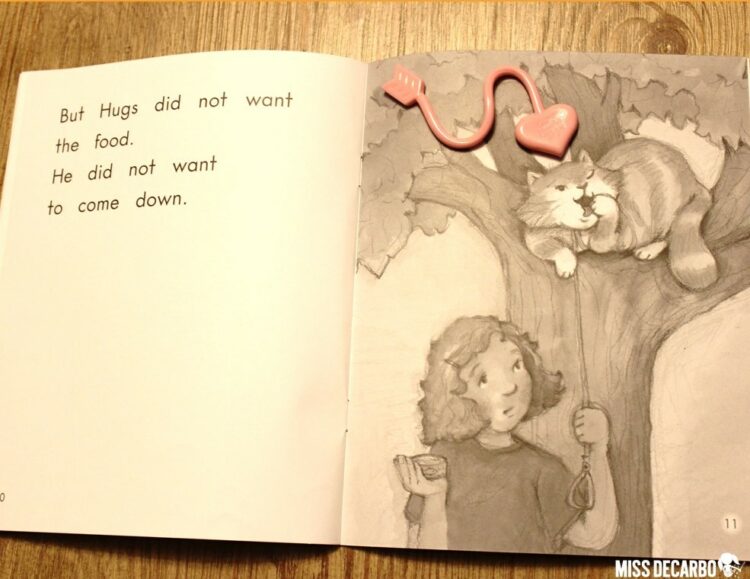
Make Text Evidence A Habit
After my readers get the hang of showing me their answers using the pictures, we continue to make it a habit during every small group meeting. I use the words, “Prove it!” so often with my students, that they can anticipate it before I even say it now. My students develop a habit of knowing to immediately back up their response or their answer by showing me where in the book- whether it is within the pictures or in the text itself- they can find the answer or the support. Your big takeaway for this part of the blog post is this: Use the statement, “Prove it!” all the time! Let’s take a look at more ways we can have our students prove their answers in order to practice this skill.

In the photograph above, I was working with a small group of kindergarteners. In this particular lesson, we were working on sequencing skills. After our first day of reading the text, we revisited the book on Day 2. This time, I asked them questions about what happened first, next, then, and last. After we discussed what happened first in the story, I asked, “What happened after it started snowing? If you know, prove it!” Then, off they went to put their Post-It Arrow on the picture that proved what event came next. This strategy also eliminates one student answering a question and disrupting the thinking process for the rest of the group. It allows each child to work at his or her individual pace while still demonstrating an understanding of the sequencing skill.
Place your passages in sheet protectors for an easy write-on/wipe-off way to show their proof! This particular group in the photograph above was working on inferencing skills. I asked the students to write down what they thought was in the box that Rob gave Grandma in the passage. You can see above that this child wrote down “a birthday present.” I then asked the students, “Show me the sentence in the text that supports your inference.” The student underlined the last sentence in the passage that makes a reference to a birthday. This was an easy and quick way to get my students to go back into the text and find the evidence that supports their inference. The sheet protectors also help us mark up the passage using dry erase markers so that students can interact directly with the text.
Helping Students Start Their Thoughts
Do you have students who you KNOW have great ideas in their heads? You KNOW they are capable of providing great explanations. You KNOW they can support their ideas and use text evidence skills, but for some reason, they don’t participate in these discussions. Your students may be in need of simple ways to start their thoughts. You can do this using thinking stems. To put it simply, thinking stems are ways for our students to start their thoughts. Think of thinking stems as the oral language version of a sentence starter for writing.

We can’t expect our students to be able to rattle off explanations of support or proof if we don’t model how to start that type of discussion or conversation. When I begin to teach text evidence skills, I always share our thinking stems for text evidence right from the beginning. I post them on our class anchor charts and at the small group table on our bulletin board. We refer to them often, and I am sure to model using them when I am showing my students how I went back into the text to find an answer. (You can read a general blog post about how and when I use thinking stems in a post I wrote about thinking stems here.)
Here are some specific thinking stems that I use for text evidence skills. You can write these on sentence strips, put them in a pocket chart, or simply make a poster with them to display in your classroom:
- The text states ______.
- According to the text, on page ___, it states ______.
- I read on page __ that ___.
- The author states _____.
- The illustration shows ____.
- According to the illustration…
Model and Practice During a Whole Group Lesson
We can find simple and quick ways to model and practice text evidence skills during our whole-group reading lessons. By simply numbering or labeling our class poems, passages, or stories, we are able to provide an easy way for beginning readers to refer to specific pieces of the text. Let me share an example of how I did this with my first graders.
The specific focus of the lesson pictured above was on inferencing skills, and I was sure to focus on using textual evidence for our inferences. Each day, I wrote a “letter” from a teacher or staff member from our building. I kept the sentences short and sweet and I numbered each sentence on the left side of the anchor chart. I also shared three picture clues with the students. The children used the text from the letter and the clues from the pictures to infer who the mystery letter was from. (The poster label and the three “objects” poster pieces come from The Clutter-Free Classroom’s pack found here.)
After a student made an inference about who the letter was from, I gave them my infamous statement again: “Prove it!” The child used a thinking stem and would make a statement that sounded something like this: “I infer the letter is from the librarian because in line 2 of the text it states she has been helping kids with ABC order. During our library class this week, Mrs. Bins taught us ABC order.” WOW! What an amazing and EASY way to get kids to USE the text in a whole-group setting, right?! It only took me the extra step of numbering my whole-group text and I had a perfect tool to use to develop and model text evidence skills for my kiddos. You can do this with ANY poem, story, phonics passage, etc. You don’t need to be teaching inferencing skills to model text evidence. This can be done with retelling skills, cause and effect, compare and contrast, and every other comprehension skill you can think of.
Make Text Evidence Visual to Readers
Color coding the text is so important, so powerful, and so engaging. I started using this strategy way back in the fall of 2013 when I posted my first Text Evidence Reading Passages on my blog. The only things you need for this strategy are crayons or highlighters and a comprehension reading passage for your students. After you ask a text-dependent comprehension question, have students go back into the text and highlight or color the specific text that shows and proves the answer. Let’s look more closely at why this strategy is helpful for students:

Color coding the text benefits visual learners. Some students get overwhelmed by a large amount of text. Other students may have visual processing issues and truly have trouble isolating and picking out the evidence from the passage. If they can “hunt for” the sentence or words that proves the answer, and then color or highlight it, it adds an element of engagement, interaction, and focus to the task at hand. (The photograph above is a passage from my Just Print Fluency Bundle.) Now, let’s look at a beginning reading passage:
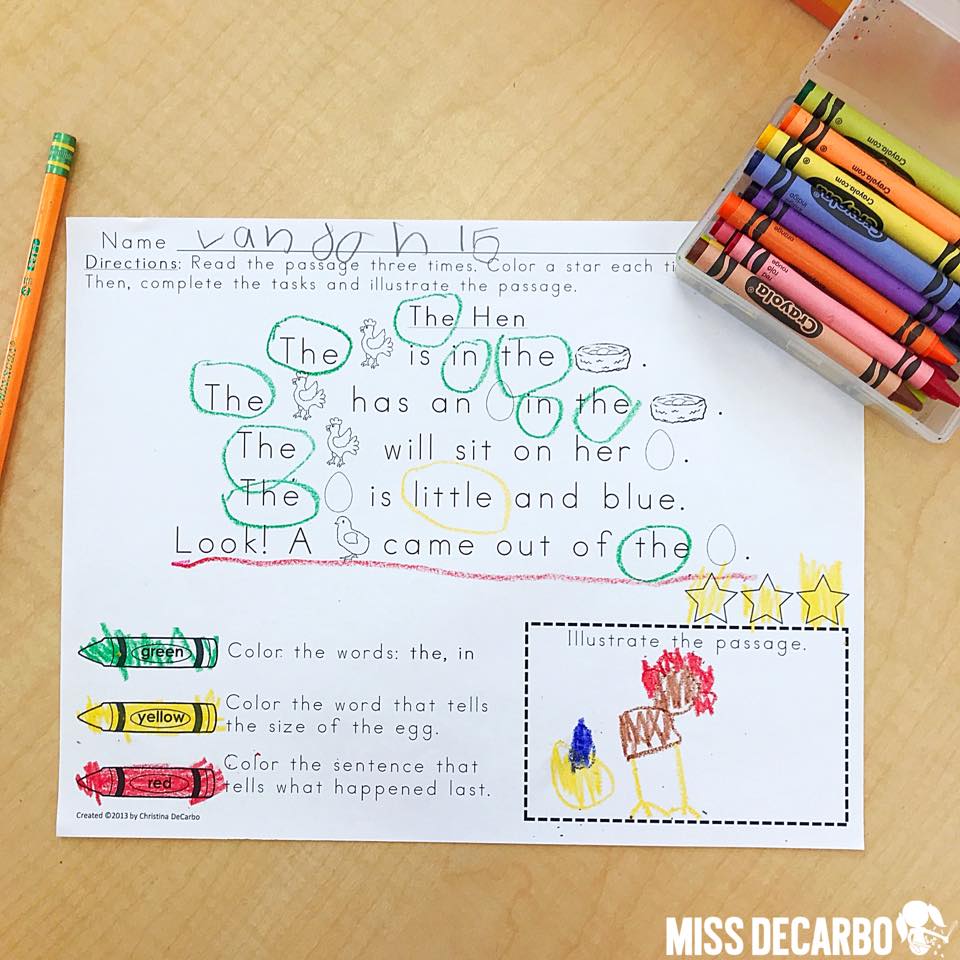
Shown above is a photograph of a kindergartener who is working on text evidence skills using the color-coding strategy. This child is working on a passage from my Text Evidence Reading Passages for Beginners pack. In this pack, the child reads the manageable passage three times for fluency. Then, the child uses a green crayon to go back into the text and find specific sight words. The yellow crayon is used to identify vocabulary. Finally, the red crayon in the photograph above was used to color the sentence that tells what happened last in the passage. This requires students to not just verbally respond or write the answer to the comprehension question- it requires the students to SHOW the textual evidence and prove it
Quick Tip: Use a different colored crayon or highlighter for each piece of textual evidence that you want students to find within the passage, book, or poem. Encourage the students to identify the ENTIRE sentence rather than just part of the sentence. This will ensure the student isn’t missing key details or descriptive language that further supports or proves his or her answer, thought, or idea.
Make It Fun: Be a Text Evidence Detective

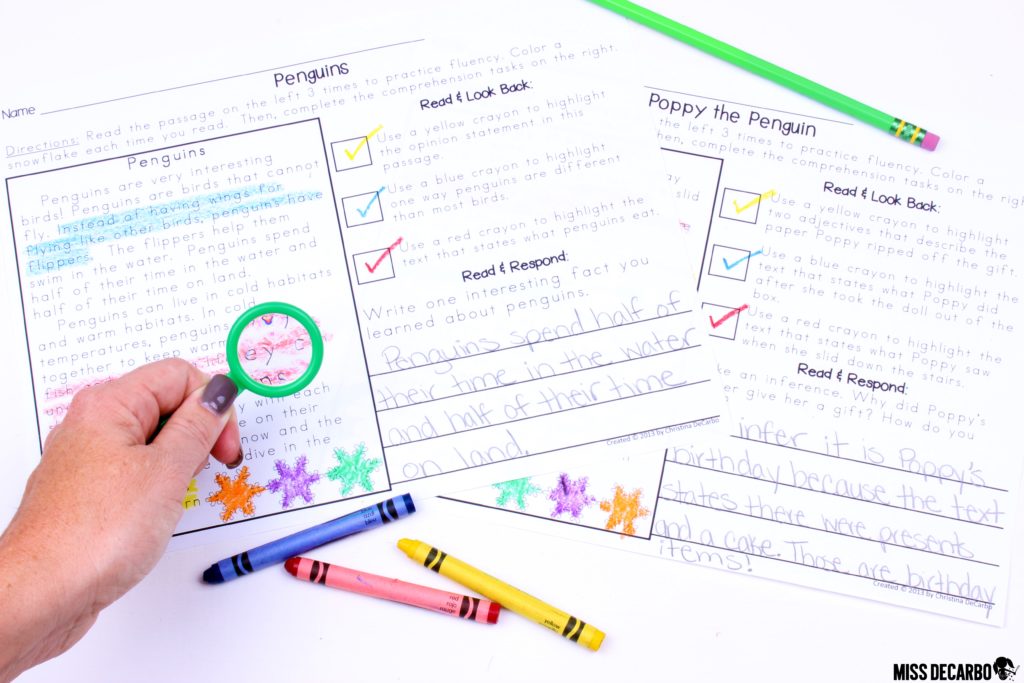
Use magnifying glasses to make text evidence practice feel more like a game than a task. Students LOVE hunting for the answer in the text with toy magnifying glasses. This adds novelty and gives your reading lessons a special touch of excitement! We also like to pretend to put on our detective coats and hats as we take out our magnifying glasses and search for evidence within the text.
The paired passages above come from my Text Evidence Reading BUNDLE Pack. It includes 160 reading passages for the year!
How often should I teach text evidence skills?
Excellent question! Supporting our comprehension with textual evidence is something our readers should be practicing every single day whether that is through verbal discussion or written practice. I want you to find that teaching text evidence skills is EASY and FUN! More importantly, I want it to make a difference in the lives of your readers and in the way you plan your small group reading lessons. One of the most important things to me as a busy teacher is the ability to teach critical comprehension and vocabulary skills, while still integrating science and social studies content. (Can I get an amen?!)
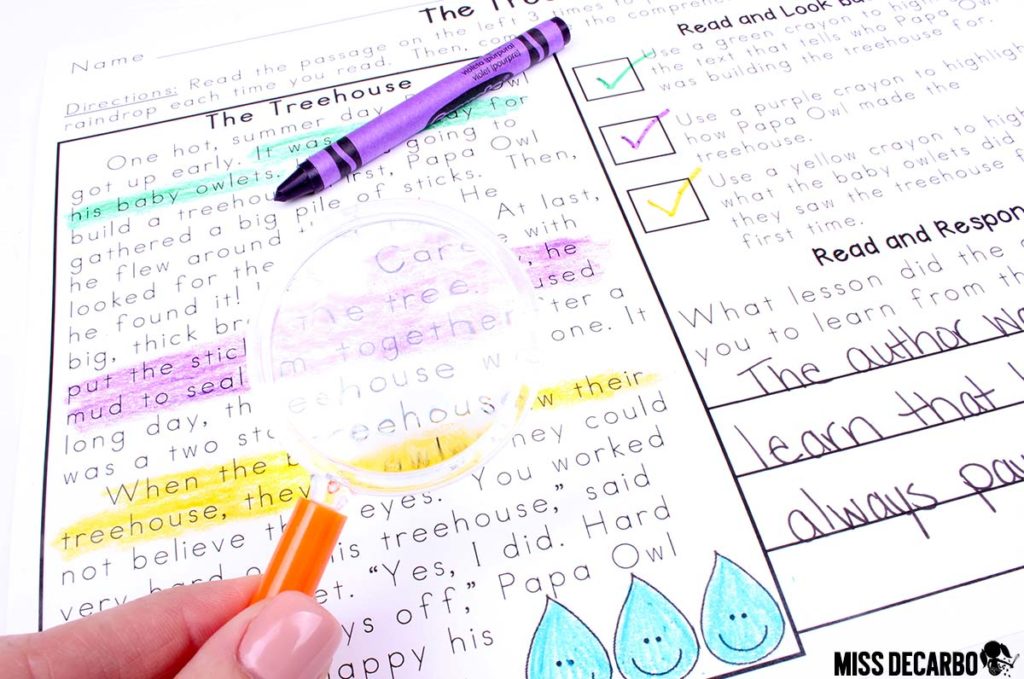
My seasonal Text Evidence Reading Passages seamlessly integrate science and social studies concepts using PAIRED fiction and nonfiction comprehension passages. Each passage focuses on fluency, comprehension, text-dependent questions, vocabulary, and written response skills. Your students will read the passage three times for fluency, complete the three “Read and Look Back” tasks by using their crayons to highlight the text evidence in the passage, and answer a written response comprehension question. The written response questions cycle through a variety of comprehension skills, such as:
- cause and effect
- vocabulary
- compare and contrast
- questioning
- visualizing
- main idea/central idea
- details
- predictions
- inference skills
- problem and solution
- character
- …and more!
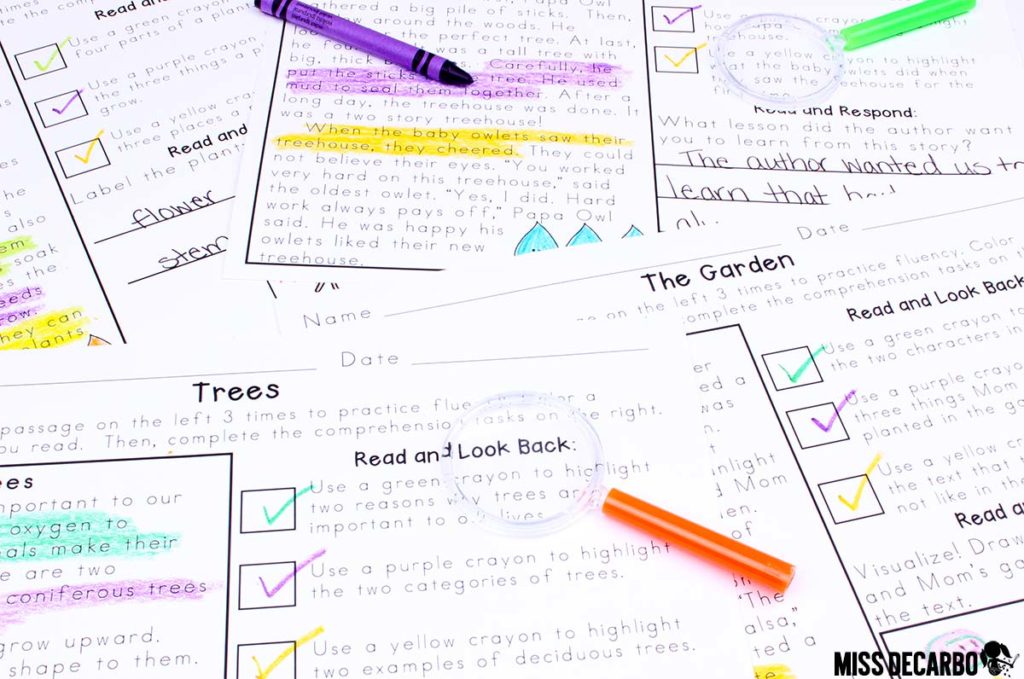
Through these Text Evidence Reading Passages, students will build confidence and have fun focusing on the text in order to answer the comprehension questions. It also helps YOU know that you are building essential reading skills, while tackling science and social studies concepts, too! It’s a WIN-WIN!
Get 160 PAIRED Text Evidence Reading Passages for the ENTIRE Year by clicking HERE.
Do you want some FREE text evidence passages to try?
If you want to try some of these Text Evidence Reading Passages out with your students, I have a FREE sample pack of FOUR Text Evidence Reading Passages from my seasonal bundle for you! I just know you’ll find these passages to be easy to use, engaging, and of high-interest for your students! Click below to get started:
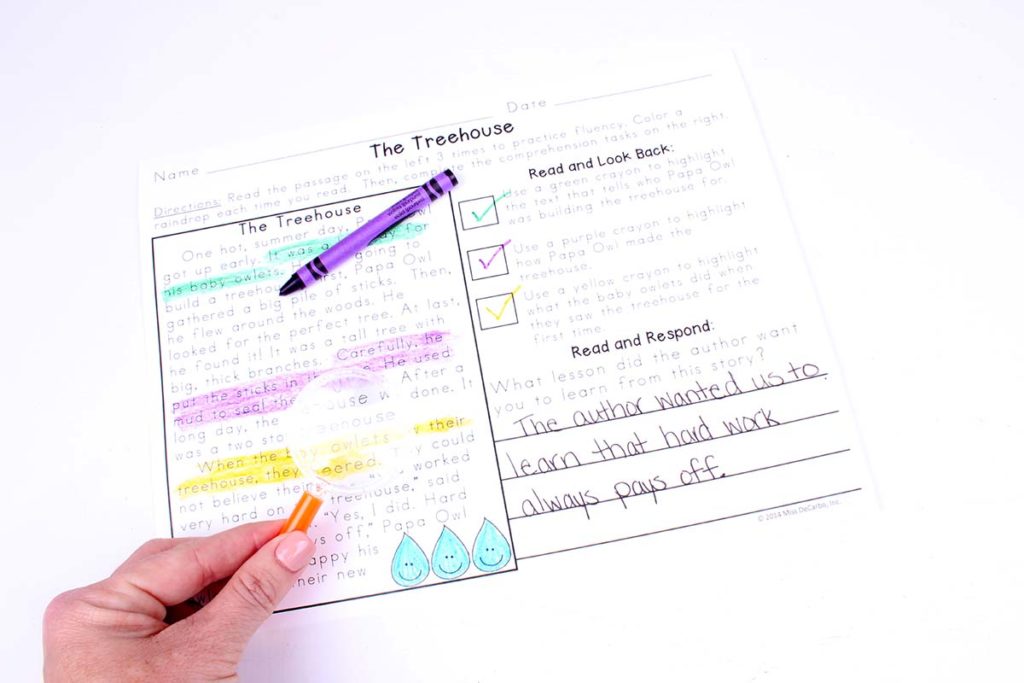
I hope this blog post gave you helpful strategies, activities and ideas that you can use when you teach text evidence skills to your primary readers. Feel free to use the images below to pin this blog post for future reference, or, to share it with your colleagues! If you have any questions, feel free to leave me a comment below. I love hearing from you!
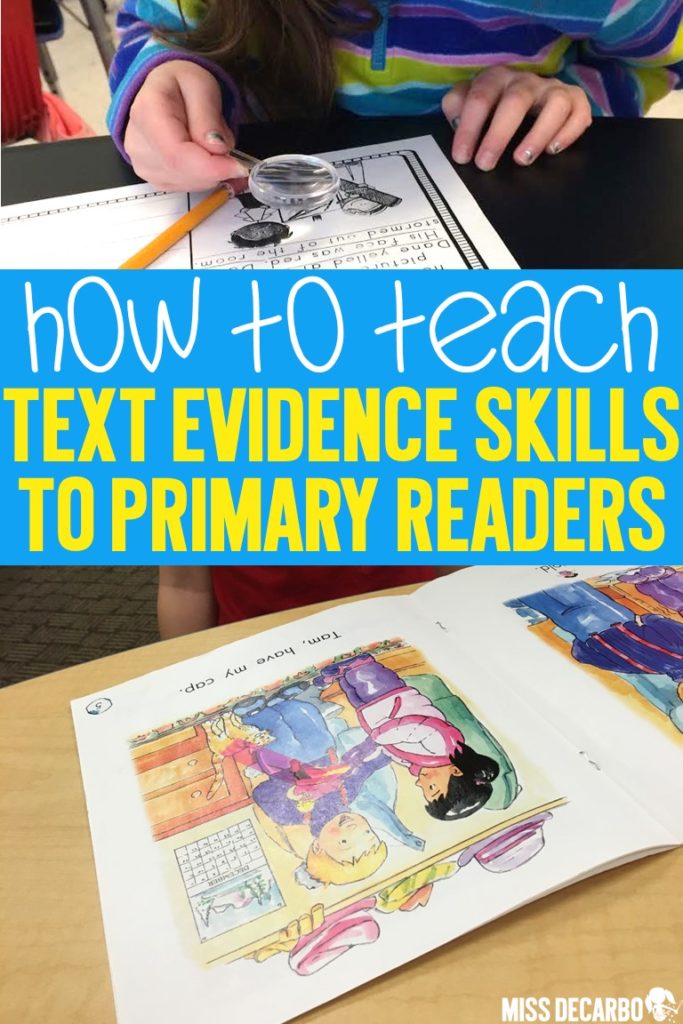
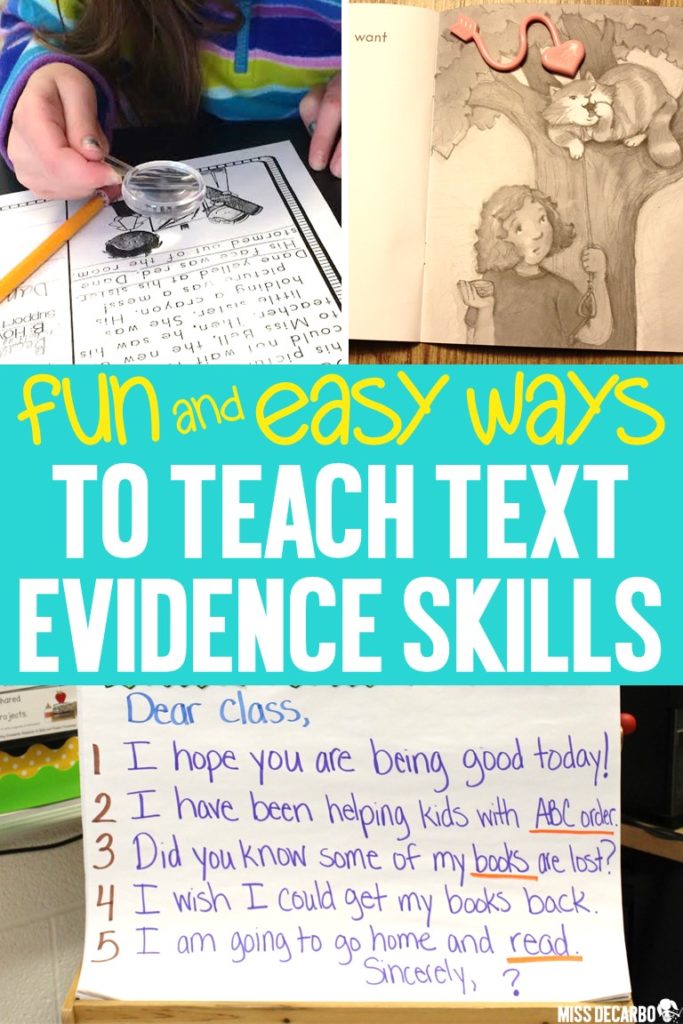

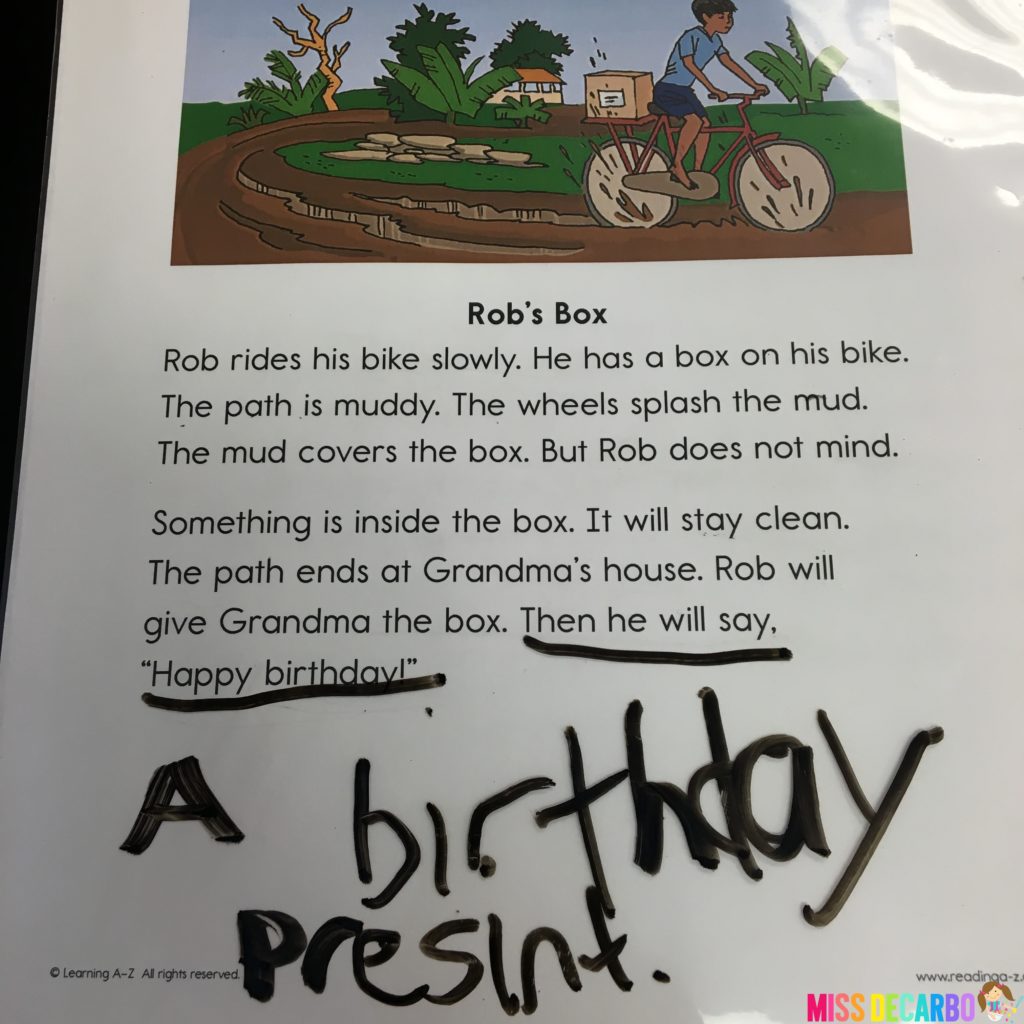

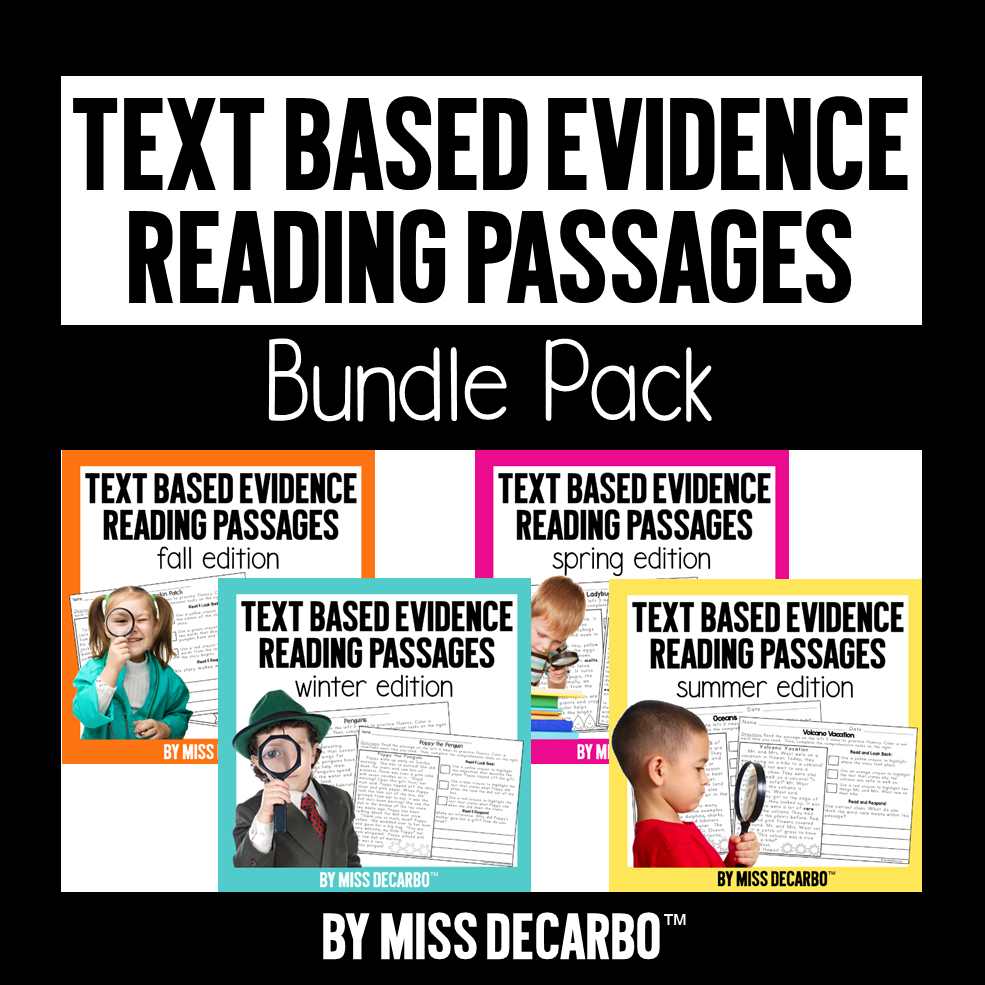
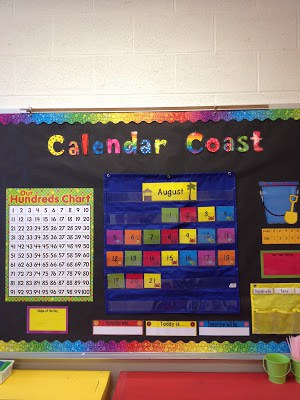
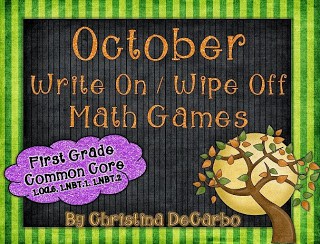
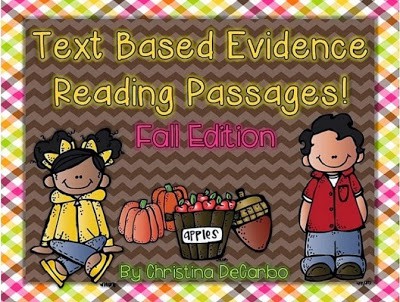
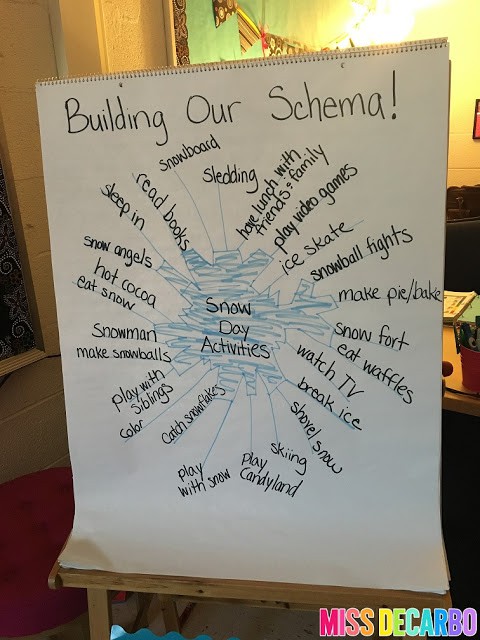
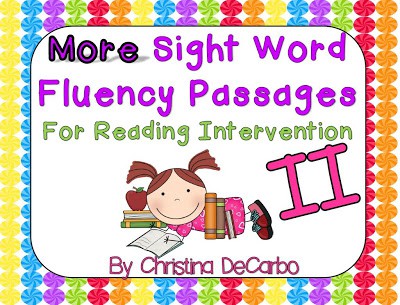
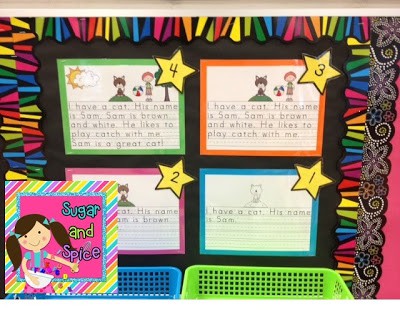
Is the reading level of the text evidence passages available?
Hi, Christine! Thanks so much for reading this post. Unfortunately, copyright restrictions do not permit me to publish reading levels such as F&P or DRA levels, but most of these passages fall within the second grade Lexile range. I hope this helps! 🙂